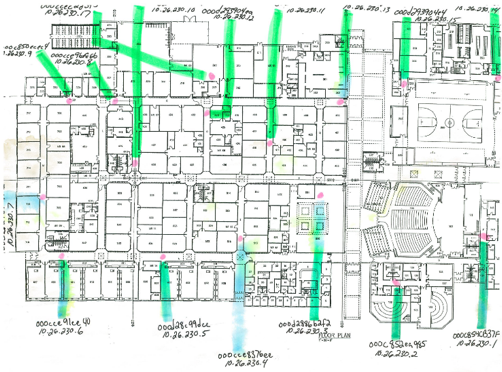 When Wi-Fi was in its infancy, it was looked at as a novelty. Often it was only installed in certain areas of a building to accommodate a few devices. Fast forward to today and you will find a very diverse group of “things” that use Wi-Fi. With wireless chipsets and the cost of compute dropping, wireless network connections have found their way into refrigerators, thermostats and exercise equipment, just to name a few.
When Wi-Fi was in its infancy, it was looked at as a novelty. Often it was only installed in certain areas of a building to accommodate a few devices. Fast forward to today and you will find a very diverse group of “things” that use Wi-Fi. With wireless chipsets and the cost of compute dropping, wireless network connections have found their way into refrigerators, thermostats and exercise equipment, just to name a few.
Over the last 20 years, Wi-Fi has spread across all verticals and has become an essential part of the network infrastructure. One vertical I am very familiar with is education, specifically K-12. I started my career 17 years ago at a newly constructed high school. The high school was state-of-the-art at the time and included brand new VoIP phones, wireless access points and laptops that were Wi-Fi-capable. I remember installing the access points, not knowing anything about the technology, in what seemed to be an even arrangement across the entire school.

My first wireless network design from 2003.
With no real requirements or design knowledge to back it up, this network ACTUALLY WORKED! Thinking of the demands thrown at today’s school wireless network, I realize my first wireless network, left the way it was on day one, would melt off the ceiling.
Expectations in the wireless classroom change significantly from year to year. In the last five years, I have seen only enterprise-owned devices allowed on the network change into enterprise-owned devices plus bring your own device (BYOD). That easily doubled device counts on the wireless network with little change to infrastructure. Move forward a couple more years and we now see enterprise-owned devices include devices issued to students and BYOD. A classroom that once supported a couple of wireless devices transformed into a classroom with three to 40 devices, only to change again and now have to support 60 to 70 devices.
Laptops and tablets have been the predominant device in classrooms for the last handful of years. We are now seeing this change to include wireless displays, environmental monitors, lighting controls, public address equipment, alarms, bells and clocks. Many of these devices are considered life-safety devices and are critical for the safety of students and must remain usable at all times. Our once nice-to-have wireless network is now a critical component to the safety of students and staff across an entire school campus.
With every increasing device count and device diversity, our wireless networks have to be able to perform at a high level at all times. Efficiency and throughput gains in new Wi-Fi standards, such as Wi-Fi 6 (802.11ax), as well as overall growth in radio technology are critical to keep ALL devices functioning at peak performance. Getting devices on and off the air as quickly as possible should be the goal of all infrastructure manufacturers to meet the high expectations of end users.
A couple of questions to think about:
- What kind of unusual wireless network connected devices do you see in your schools?
- What instructional demands challenge your wireless network in your classrooms?
- What traditionally un-networked device do you have in your school that can’t function without network connectivity now?
Go Deeper
Educational institutions among early adopters embracing Aruba Wi-Fi 6
Why OFDMA is a Magical Feature in 802.11ax
Deliver an Exceptional Experience with Aruba 802.11ax
Read My Other Blogs
Wi-Fi 6: Should You Believe the Hype?
Is Early Wi-Fi 6 Buy-In Worth It in The Budget-Conscience Public Sector?




